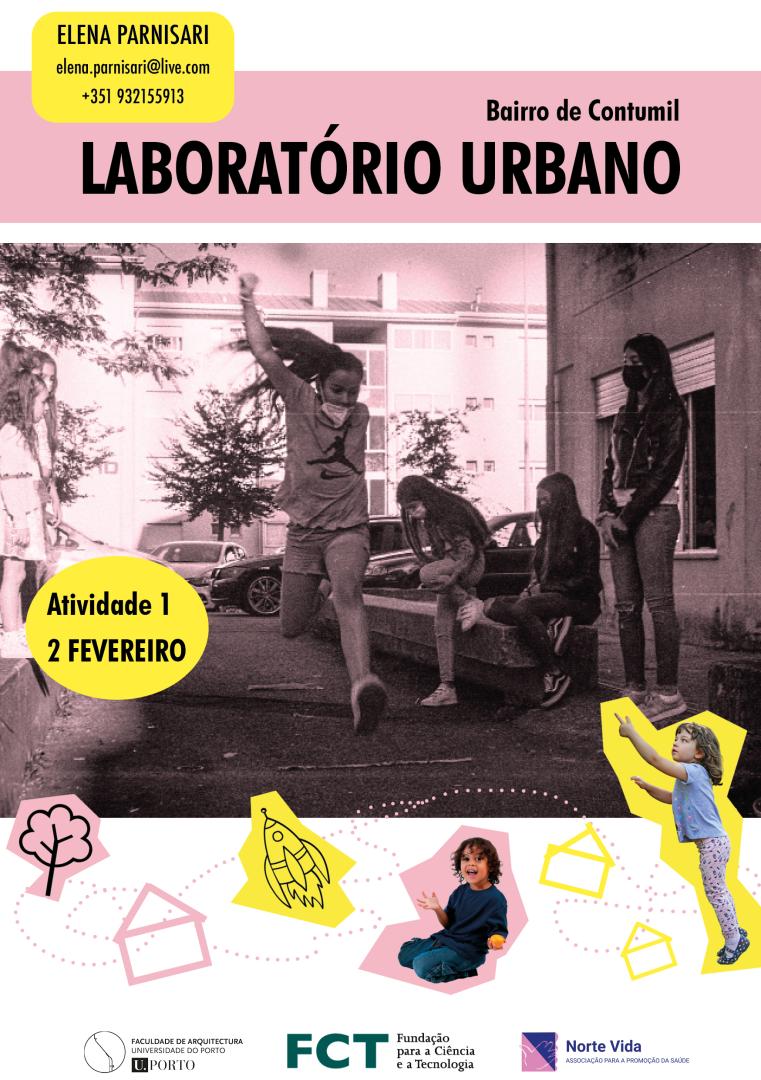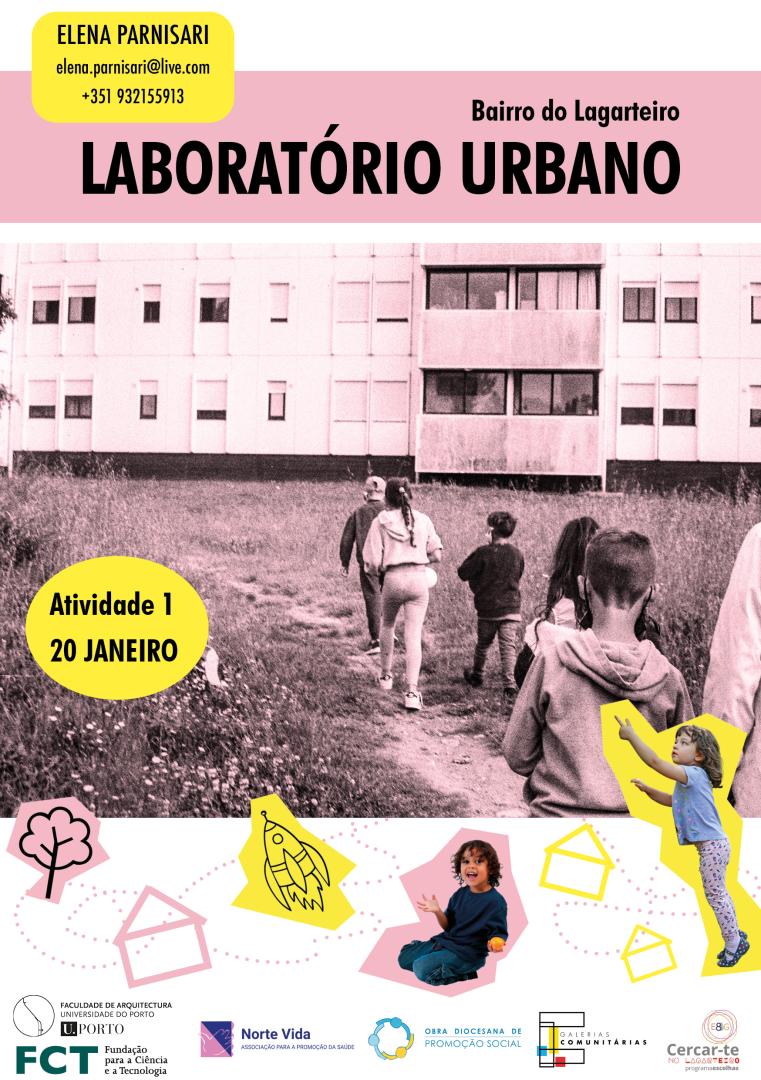Measuring children’s right to the city
Basic information
Project Title
Full project title
Category
Project Description
The urban laboratory experience aims at showing the resilience of participatory planning made visible through children’s actions in social housing neighbourhoods.
Assuming children as indicators of urban inequality and as determinants for inclusive urban design, would support formulating more inclusive urban policies.
Finding procedural tools that are reproducible and adaptable in different context would help people exercise their rights.
Geographical Scope
Project Region
Urban or rural issues
Physical or other transformations
EU Programme or fund
Which funds
Description of the project
Summary
The idea intends to investigate whether it is possible to formulate more inclusive urban policies, starting from the exploration of co-responsibility in critical neighbourhoods, considering children as indicators of urban inequality and as determinants of inclusive urban design.
It will do so by measuring children’s (6-10 years old) right to the city, as right to inclusiveness, producing an analysis-reading tool that adapts to various geographic, social and cultural contexts. Testing this urban toolkit through urban design laboratories in Contumil and Lagarteiro social housing neighbourhoods in Porto, Portugal.
It will make visible the social policies, as well as the physical conditions of their built environments that have generated social exclusion and diminish the resilience of their communities. Providing a road map for all who want Southern Europe to move forward in improving everyday urban opportunities for children (advocates and policymakers), offering a template for effective, long- term action in this lack of inclusion of public life.
The action-based idea’s merit is to understand how to promote equitable, inclusive and caring neighbourhoods through urban and participatory design that enables residents to co-create alternatives targeted to children in contexts of social exclusion. In doing so, providing safe and inclusive spaces for children, make it inclusive to all urban residents.
(This work was supported by the Portuguese Foundation for Science and Technology (FCT) through the individual research grant 2021.06908.BD)
Key objectives for sustainability
Public spaces have become fragile risk environments unable to deal with emergency situations. However, proximity can still be found inside the neighbourhood unit and made visible through children’s actions.
From this urban laboratory idea, it would benefit health, well-being, local economy, safety, nature, sustainability and urban resilience that from an urban cell would apply to all small districts within the big city.
The environmental sustainability objectives are:
- Examine interventions that explore the youth’s inclusion in urban policies’ elaboration and in urban design solutions, as a possibility to promote inclusive and resilient urban practices in neighbourhoods.
- Focus on solutions that prevent and respond to situations of greater vulnerability, through coordinated efforts from municipality sectors, public-private entities, educational infrastructures and families.
- Reverse the priority by focusing on neighbourhoods, where the child develops spatial and relational skills with the community.
- Use the example of these two government-funded neighbourhoods to relate to the entire city, working with those affected to come up with proposals, programs, targets, and strategies to achieve the desired results and implement policies for a child-friendly city.
Key objectives for aesthetics and quality
Collective behaviours occupy, shape and define places anthropologically. The urban space is considered educational, its users can appropriate it with their imagination and personal interpretation, integrating themselves into a fragmented and changing context.
The objectives of quality of experience are:
- Demonstrate that childhood, intended as a social construction dictated and affected by contextual factors, is the essential paradigm to be analysed, questioned and followed for more inclusive and resilient urban communities to inform policies.
- Give priority to children, in order to take into account the whole population and to implement strategies without physical and sensory obstacles.
- Put children and young people into decision-making positions and encourage organisations and businesses to hear their views. Children represents the future, and participation of children is seen as their urban right (integrated urban planning process)
- Promote a vision for a more child-friendly public realm, as part of a fairer society. Producing an environment capable of arousing in children curiosity, a certain awakening and the practice of forms that will enable them to discover the world and to find their place in it by themselves.
Key objectives for inclusion
The idea establishes minority groups, children and their caretakers, as the most affected by socio-spatial inequalities. Taking place in domestic environments and public spaces, participating in exchanges, interactions, constant adjustment processes that animate, perpetuate and transform society.
This based action idea is conceived and will be carried out in close association with the understanding of a collective problem, in which participants from vulnerable groups will be co-involved. The cut-out of these social categories represents the variability of time and places manifested in urban policies, which in this idea marks strongly the influence of such gender and social categories on cultural practices.
The inclusion objectives are:
- Demonstrate the absence of inclusivity in urban agendas (fight stigma and prejudice).
- Promote networks of trust at neighbourhood level, reclaiming public spaces, emphasizing the importance of neighbourly cooperation.
- Formulate a qualitative assessment: understanding the absence of inclusive urban policies and design, and how it has transformed public spaces into areas of transit between one institutionalized activity and another, depriving its users of their freedom.
- Co-create a change in urban agenda and co-designing a caring and resilient evolution of social housing neighbourhoods.
Physical or other transformations
Innovative character
The real and perceived insecurity has been restricting the presence of minors in public spaces, denying the educational function of the city. Children’s spaces in modern cities have become institutionalized, restricted to places especially designed for them. Children are excluded from the formulation of urban public policies, and therefore from targeted urban programs.
In the urban cell of the social housing neighbourhood - where the feeling of community and neighbourliness persists, where there is still a social control over the security of space, and where the ethnic variety appropriates the space in a different way - what is missing is a program for children.
Children’s participation should be the benchmark of improving cities for children, but while this movement has engaged academics, advocated and municipalities (since the Convention on the Right of the child – 1989), it has had little, or none influence on planning and design.
The three dimensions would be combined in the idea as following:
- Encourage children to be active creators of their environment (the place as an experience).
- Integrate children into urban planning agenda (children’s participation and education in
co-planning).
- Recognize children’s participation in decision making as fundamental to their human dignity and healthy development (participation of children as their urban right).
- Promote integration so that managing and planning cities is responsive to and inclusive of children.
- Understand the use that each ethnic group makes of urban space (recognition of the specificity of cultures) and how this is perceived and generate socially inclusive solutions (shaping forms of living together).
- Produce an analysis-reading tool that adapts to various contexts (building networks), testing this tool in the context that was chosen as a case study to generate a project.
- Systematize a methodology for a more inclusive urban design.


